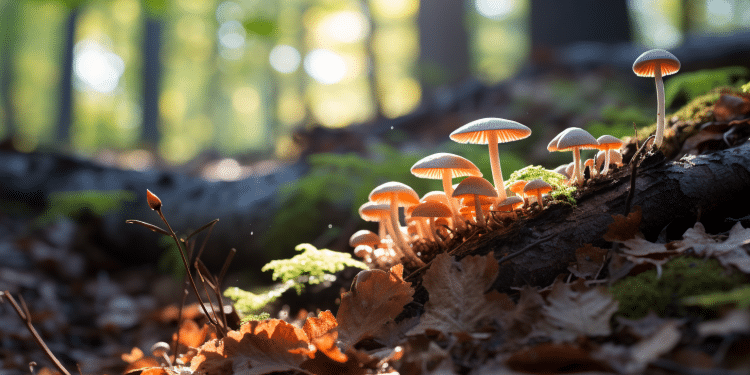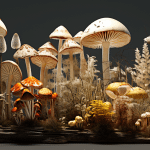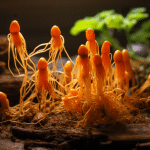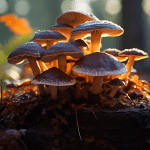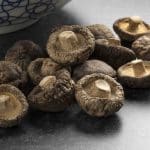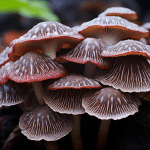Fungi are found around the world, as essential to our lives as grain, livestock, fish, or anything else alive. Here are just some reasons to admire this life form.
What’s All The Hype About With Fungi?
Without various types of fungi on the planet, we would quickly find ourselves knee-deep in dead leaves and other plant material that refused to decompose. Trees that died would just keep lying there, wherever they fell.
Only fungi could decompose the lignin, a hard material that is at the core of the tissues in a tree. Our crops will fail because nutrients, which are recycled by the fungi from the tissues of dead plants, will not be available anymore. Important farm animals, such as sheep, would not be able to digest grass without the help that some friendly fungi provide.
And then there is just the pure beauty of so many of these organisms. What would our forests and fields look like if there were not all these amazing mushrooms in autumn, and the (sometimes ominous) toadstools. This page takes a look at a really essential bunch of living things we all need to appreciate, on balance.
What Are Fungi?
Scientists have previously placed fungi within the kingdom of plants, mostly because they were thought unable to move on their own.
Closer examination, however, has shown that at least a few fungi have reproductive stages that include swimming gametes.
The most obvious way fungi are different from plants, though, is that they do not produce food using sunlight and carbon dioxide. Like animals, fungi eat by digesting and absorbing what they need from their surroundings. Nowadays, fungi have been given a realm of their own.
Fungi Examples by Family
Within the kingdom of Fungi, they are the most prominent families, or “phyla”.
Basidiomycota: This family includes mushrooms and muscaria.
Ascomycota: Sometimes called a sack mushroom, members of this family typically have bright, elongated fruiting bodies.
This group includes the highly delicious morel mushrooms (see below) and truffles. It also includes the species of Penicillin that gave us our first effective antibiotics.
Neocallimastigomycota: These fungi live in the digestive tracts of animals that eat plants, such as sheep.
The enzymes they produce break down polysaccharides, such as cellulose, which is the hard material that gives plants their toughness. Once those fungi have done their job, the simple carbohydrates they have produced can be used by the sheep for their feed.
Glomeromycota: This is a highly specialised fungus family, living in beneficial symbiosis with liverworts (small plants that look like mosses).
Chytridiomycota: These old-timey fungi digest hard proteins such as keratin (common in skin and hair) and chitin (especially prevalent in the exoskeletons of insects).
Microsporidia: This is a small group of one-celled, parasitic fungi that primarily infects beetles.
Basidiomycota is the larger family, and what we are more familiar with.
- Mushrooms
- Puffballs
- Stinkhorns
- Bracket fungi
- Jelly fungi
- Boletes
- Smuts
- Bunts
- Rusts
- Chanterelles
- Earth stars
Mushrooms are among the most visible groups of mushrooms. Most fungus organisms are hidden in soil, leaves, or dead wood from sight (depending on species). The larger fruiting bodies, which appear (mostly during autumn), are visible and often quite beautiful. Some mushrooms are even bioluminescent, as can be seen in the video below.
Do Fungi Eat or Do They Use Photosynthesis?
Like most fungi, Basidiomycota are saprotrophs, meaning that they break down dead material, including the most rigid of plant materials, such as lignin, the main structural component of trees. Underground, Basidiomycota make vast networks of microscopic tubes called “hyphae”. These grow out through dead plant and animal matter, by secreting enzymes that dissolve the path. The dissolved material is absorbed and digested as food.
Do Fungi Reproduce?
The fruiting bodies that we see on top of the soil are distributing spores that are developing into new individuals. Some of those fruiting bodies, such as Russulas in the photo above, are quite tasty. Others, like the Amanitas in the picture below, make you really sick.
Phylum Ascomycota
Ascomycota is the largest fungus phylum, comprising more than 64,000 species. Some of these fungi are highly prized by humans for their culinary applications. There are two major groups, or subphyla,: the Pezizomycotina and the Saccharomycotina.
Subphylum Pezizomycotina
Pezizomycotina mushrooms, which have fruiting bodies resembling mushrooms, include the muscaria, truffle, ergot, and chalice mushrooms. Truffles (Tuber genus) are among the most expensive foods on Earth. It is not possible to grow truffles on a mass scale, and even their preferred woodland habitats are extremely rare. Pigs or dogs with particularly sensitive noses are used to find the fruiting bodies, which are very valuable, below ground. White truffles occasionally sell for about $5 per gram ($2,000 a pound), but their value changes from season to season depending on the supply.
Subphylum Saccharomycotina
This group contains the majority of the yeasts, including the highly significant bread-making yeasts. The white blossoms on grapes (pictured above, third) are wild yeasts mixed with molds. In the past, natural yeasts found on grapes were relied upon for fermentation of the juices and the production of wine. Nowadays, commercial vintners typically innoculate grape juices with high doses of a specific strain of yeast, such as Saccharomyces cerevisiae, instead of relying on the slower-growing wild yeasts.
Whichever yeast is used, the process is basically the same. The yeasts consume sugars (without requiring oxygen) and create alcohol and carbon dioxide during the fermentation process.
Fungi Associated with Diseases
Certain mushrooms are great ingredients in their own right, while yeast helps us create some of our basic foods, such as bread. Fungi that consume detritus maintain the nutrition content of our crops through efficient recycling of decomposing organic materials. However, there are a few species of fungi that may cause harm to humans.
Athletes foot are caused by a fungus called the trichophyton.
Spores of certain Ascomycota, such as powdery mildews, are serious problems for gardeners and farmers, particularly in wet years.
Late potato blight is caused by Phytophthora infestans, not really fungi, but closely related. It and other water moulds cause plant tissues to mush.
By the 19th century, much of Irelands human population relied on potatoes for sustenance. Potato Blight destroyed crops, and millions died or were forced into exile.
Fungi, particularly molds, affect prepared foods such as bread, fruit preserves, pickles, and cheese. If mold has infiltrated the food deep enough, you will have to throw the food out.
Ergot is an interesting mushroom that can grow on stored grains such as rye when dampened. The hallucinations and seizures caused by eating ergot were the reason behind “St. Anthonys Fire” in medieval times. Entire communities were taken over with bizarre symptoms, which were commonly blamed on witchcraft.
Dutch Elm Disease was responsible for millions of dead elm trees worldwide.
Beetles that lay beneath the bark of elm trees carry the fungus, which intrudes into the trees internal tissues.
Several species of parasitic fungi attack farms and wild fish.
Fungi That Cause Wood Decay
The types of fungi that cause decay of wood are essential for recycling nutrients from downed trees, but they can pose a threat to wood homes and other buildings. Generally, complete wood decay involves a variety of different types of fungi. Despite the harm fungi can cause to homes and foods, I still stand by my initial statements. Fungi are, on balance, beneficial for us, and we should be thankful!
You can find our favorite capsules, powders, gummies, and other products on the following pages of our website and learn more about each individually:
Additional Resources:
